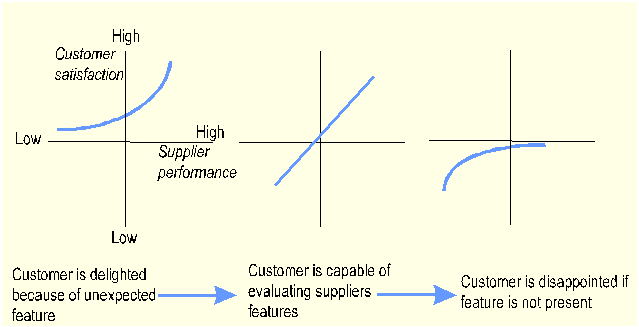With the exception of Kano’s model none of the models have included time as a dimension. Even Kano takes a basic view of the impact of time on the perception gap by simply suggesting that expectations will rise.
For example, after you have introduced your new call centre service and thereby gained market share, competitors will quickly copy and follow. Soon customers will expect it from any supplier and you discover that a year ago what attracted and delighted customers is now a must. Even if there is no competitive response (as is the case with internal or monopoly service providers) customers will soon accept a new service as the norm. Yesterday’s attractive quality will become tomorrow’s "must be".
Mäkelin and Vepsäläinen have introduced a three-phase ageing model which illustrates this (Figure 3.5). They also argue that between attractive and must-be phases there is a phase where the availability of the element and customer satisfaction are linearly dependent, i.e., customers are capable of evaluating the element and making rational buying decisions.
